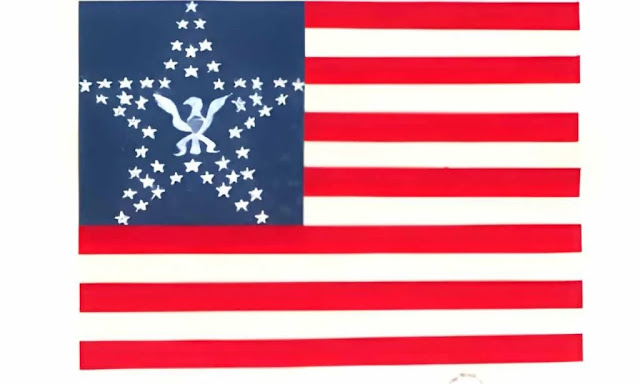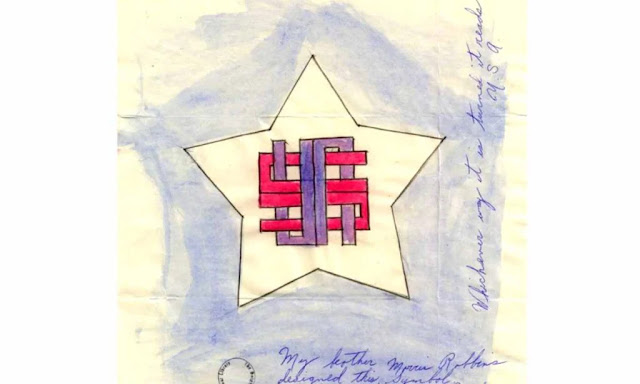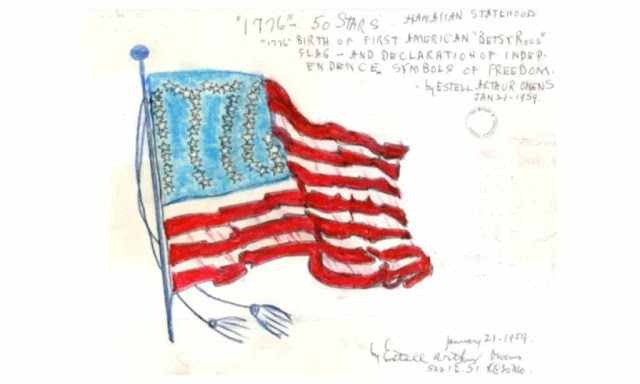The American flag, a symbol of unity and pride, has seen many changes since its original design was established in 1818. The law required the flag to feature 13 alternating red and white stripes representing the original colonies and a white star for each state on a blue field. Each time a new state joined the Union, a new star was added, leading to several redesigns.
During President Dwight D. Eisenhower’s administration in the 1950s, plans were made for the addition of Alaska and Hawaii as the 49th and 50th states. This sparked public interest and led to over 3,000 flag design submissions, ranging from simple sketches to detailed artwork. Let’s explore 10 designs that didn’t make the cut.
1. The Radical Alteration Flag
2. Military Inspiration
3. The Branding Logo Flag
4. Philip C. Brown’s Patterns
5. The 1776 Flag
6. Geography Junkies’ Dream
7. The USA Initials Flag
1. The Radical Alteration Flag
Two extra white stripes and blue stars on a white background.
Four stars in the corners represent President Franklin D. Roosevelt’s Four Freedoms.
Poetry along the top and bottom reading, “From the state that is large to the one that is small/All fifty offer peace and goodwill to one and to all.”
Historical Significance:
This design was considered radical because it deviated significantly from the traditional flag design.
Roosevelt’s Four Freedoms—freedom of speech, freedom of worship, freedom from want, and freedom from fear—inspired the corner stars, reflecting the era’s values.
2. Military Inspiration
Image Credit : DWIGHT D. EISENHOWER PRESIDENTIAL LIBRARYWhite stars are arranged in a larger star pattern or encompassing a bald eagle.
Incorporated elements from early military flags.
Historical Significance:
Military flags have played a crucial role in American history, symbolizing strength and unity.
The bald eagle, a national symbol, and star patterns evoke a sense of patriotism and heritage
3. The Branding Logo Flag
Letters “USA” inside a star, readable from any direction.
Historical Significance:
This design highlights the influence of branding and logos in modern symbolism.
It balanced readability and national identity in a unique way.
4. Philip C. Brown’s Patterns
Six different patterns for the 50 stars, including rows and circles.
Veterans of Foreign Wars endorsed a circle of stars representing unbroken unity.
Historical Significance:
The circle symbolized unity and continuity, important themes in American symbolism.
The “polar star of Divine Guidance” concept reflected a guiding principle for the nation.
5. The 1776 Flag
Stars arranged to spell out “1776.”
Historical Significance:
The year 1776 marks the Declaration of Independence, a pivotal moment in American history.
Betsy Ross is traditionally credited with sewing the first “stars and stripes” flag that year.
6. Geography Junkies’ Dream
Design Description:
48 stars inside a continental US map, with stars for Alaska and Hawaii placed atop the map.
Historical Significance:
This design emphasized the geographical layout of the states.
It visually represented the addition of Alaska and Hawaii to the Union.
Conclusion
These rejected designs showcase the creativity and diversity of ideas that Americans have when it comes to their national symbols. Each design tells a unique story and reflects different aspects of American values and history. The American flag remains a powerful symbol of unity and pride. Appreciating these designs reminds us of the importance of national symbols and the stories behind them.











0 Comments